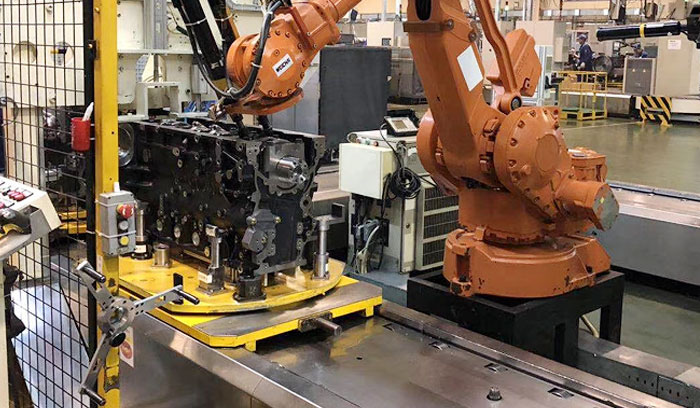

Robot is an important industrial automation equipment, which plays an increasingly important role in modern industry. Among them, adding the position sensor to the seventh axis of the robot can improve the positioning accuracy of the robot, improve the working efficiency of the robot, and reduce the working error of the robot, which has strong practical value and wide application prospects. This paper will explain the use of the seventh axis position sensor from the working principle, advantages and applications of the robot position sensor.
The working principle of robot position sensor
Robot position sensor is a kind of sensor specially used to measure robot displacement and attitude change, which provides accurate feedback about robot position by measuring robot position and Angle information. Robot position sensor includes mechanical position sensor, photoelectric encoder, laser distance sensor and so on. Photoelectric encoder is one of the most widely used position sensors.
The robot photoelectric encoder adopts the principle of rotary encoder, which includes light source, optical axis, photoelectric meter, large CAM and other components. When the robot rotates, the large CAM will also follow the rotation, making the optical axis rotate in sync. At this time, the light emitted by the light source passes through the lens group and is divided into two beams, which are respectively hit the photoelectric meter on both sides of the optical axis. When one of the beams of light hits the photoelectric meter, the photoelectric meter will output a pulse signal, which is called the "counting signal". When the rotation Angle of the robot is increased by a certain amount, the photoelectric encoder will output the corresponding number of pulse signals, which realizes the accurate measurement of the robot position.
The robot's seventh axis adds the advantage of position sensors
The advantages of adding a position sensor to the seventh axis of the robot mainly include the following aspects:
1. Improve the positioning accuracy of the robot
The position sensor added to the seventh axis of the robot can accurately measure the position and moving state of the robot in the working space, reduce the error between the robot and the workpiece, and improve the positioning accuracy of the robot. This is more important for tasks requiring high precision, especially applications requiring robot visual navigation.
2. Improve the working efficiency of the robot
The robot position sensor can realize the jing accurate control of the robot motion contour, so that the robot can move on the jing accurate path, and improve the working efficiency of the robot. For example, in the assembly industry, the position and attitude of each part are different, and the robot needs to be coupled according to the specific position and attitude. In this case, the position sensor added to the seventh axis of the robot can accurately measure the position, attitude and Angle of the parts, and can quickly adjust the position and attitude of the robot, thus improving the assembly efficiency of the robot.
3, reduce the working error of the robot
The robot position sensor can measure and feedback the position, attitude and Angle of the robot in real time, and reduce the error in the working process of the robot. For example, in the welding industry, the position control and attitude control of the robot are very important, and if it is not well controlled, it will lead to poor welding quality. Adding a position sensor through the seventh axis of the robot can accurately control the position and Angle of the robot, thereby reducing the risk of welding errors.


No. 3, Guangda Road, Zhitang Industrial Park, Changshu City